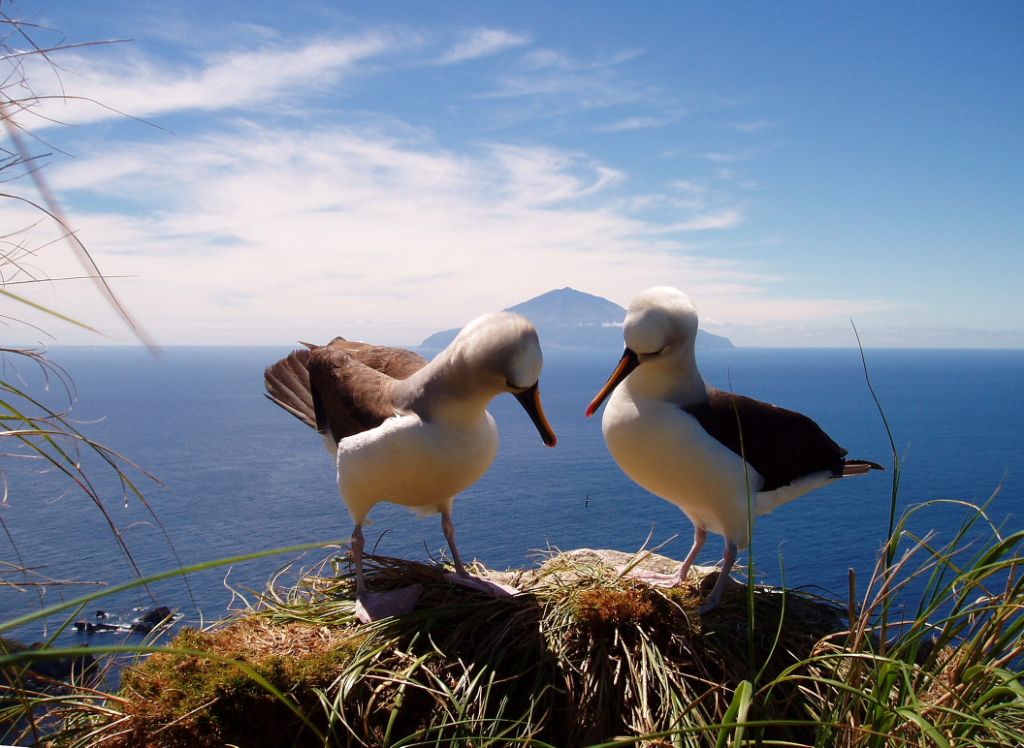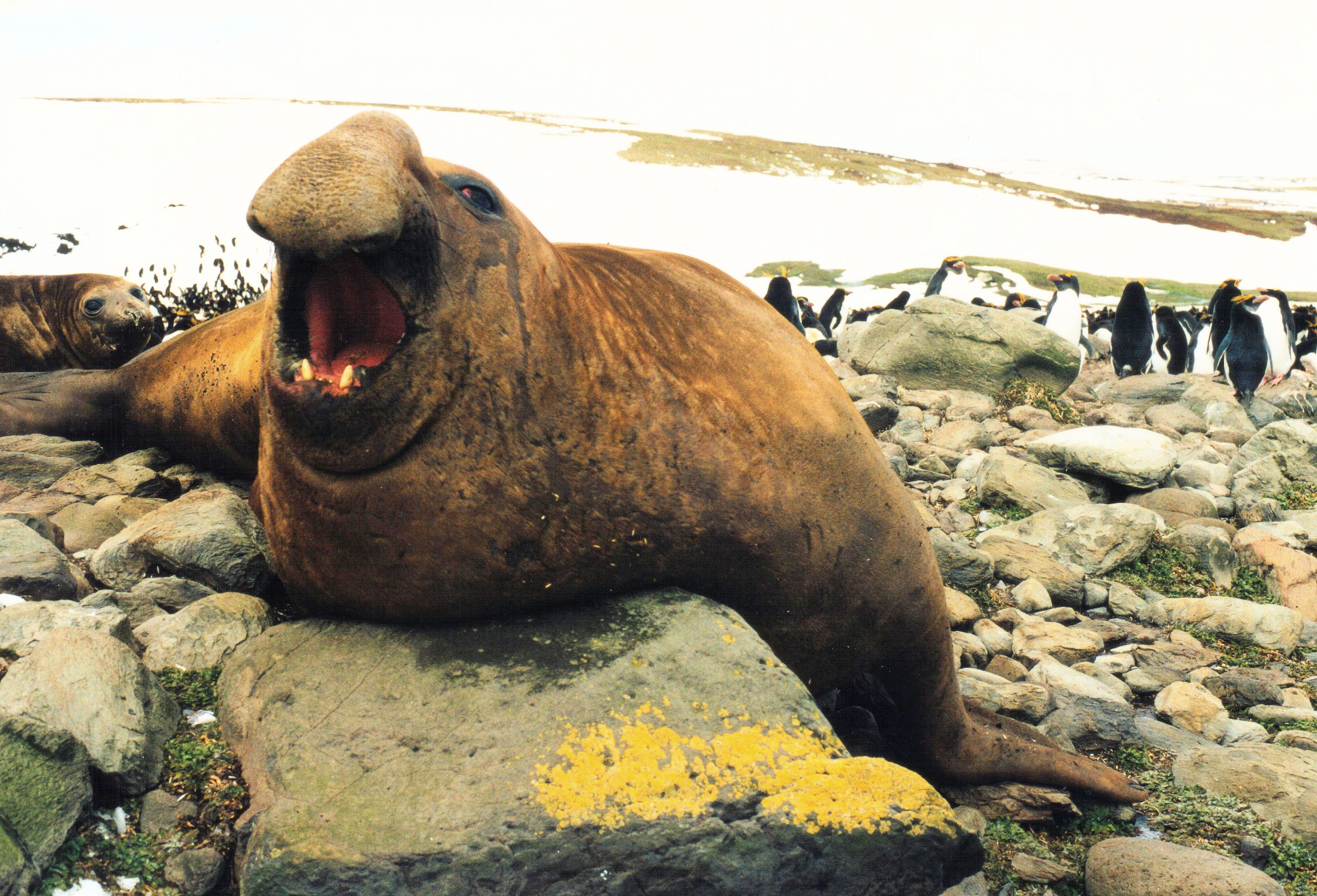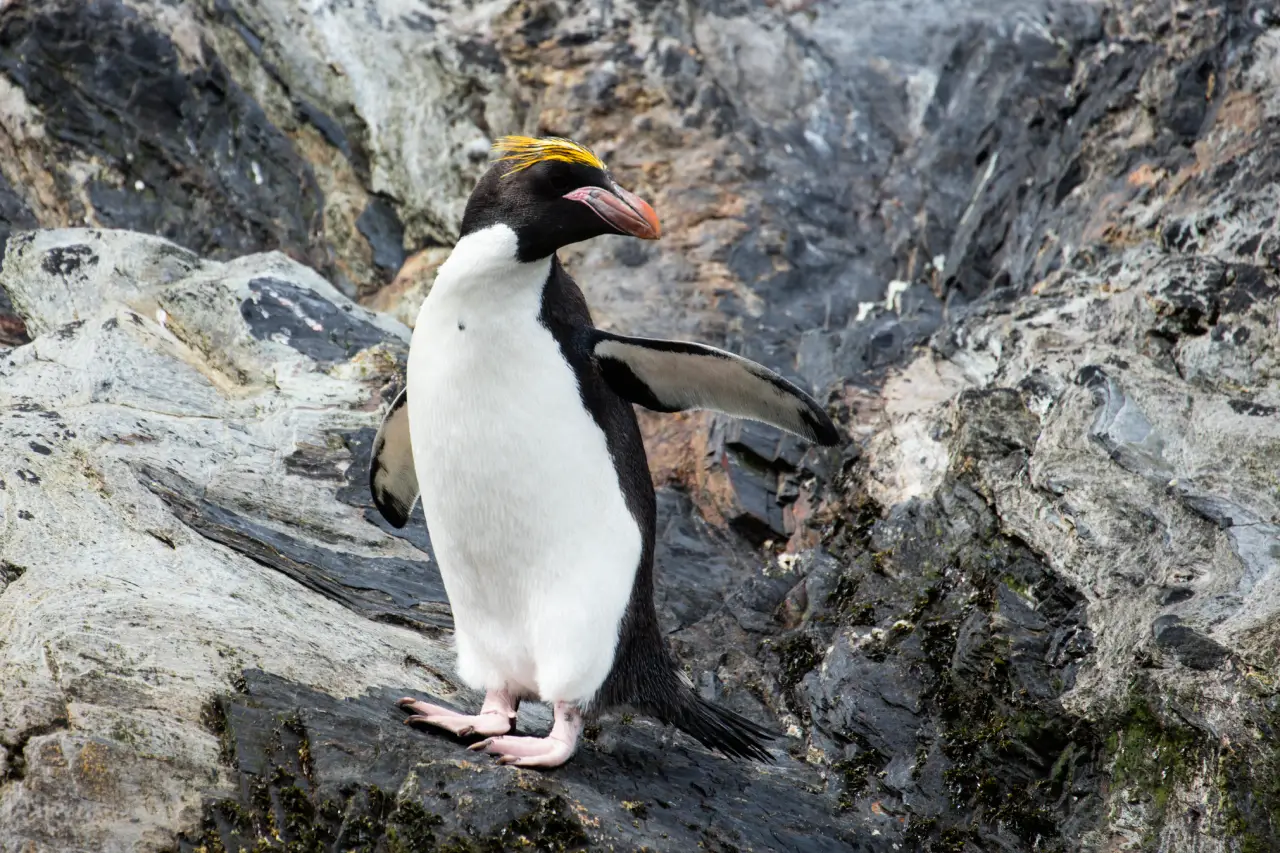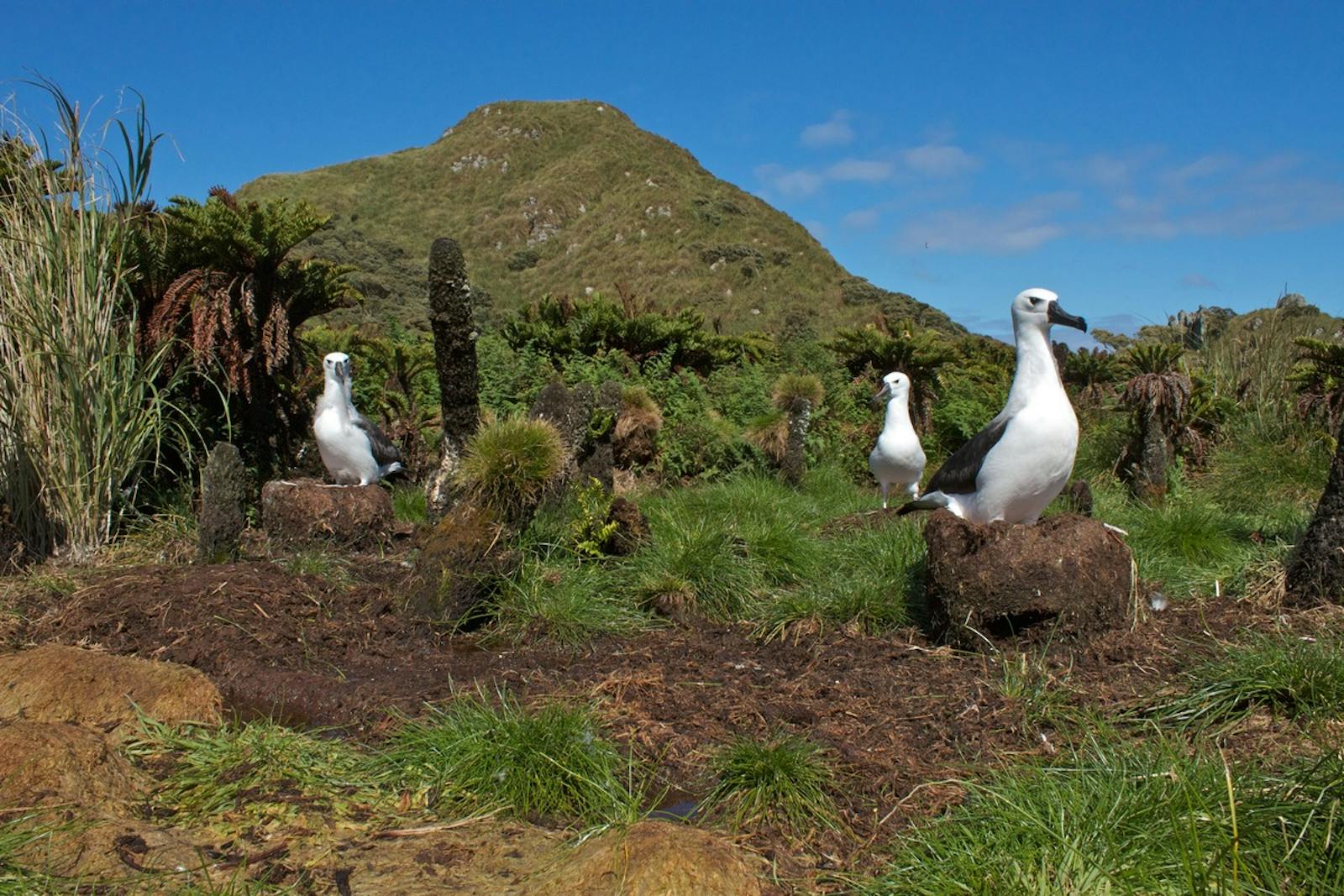Tristan Da Cunha-Gough Islands Shrub and Grasslands
The ecoregion’s land area is provided in units of 1,000 hectares. The protection goal is the Global Safety Net (GSN1) area for the given ecoregion. The protection level indicates the percentage of the GSN goal that is currently protected on a scale of 0-10.
Bioregion: Tristan Volcanic Islands (AT1)
Realm: Afrotropics
Ecoregion Size (1000 ha):
17
Ecoregion ID:
68
Conservation Target:
48%
Protection Level:
10
States: British Overseas Territory
Gough Island hosts one of the most important seabird colonies in the world. About 20 species of seabirds breed on the island. The breeding populations of three species of albatrosses, including the whole population of the critically endangered Tristan albatross, the world’s largest population of sooty albatross, and the world’s second-largest population of Atlantic yellow-nosed albatross, all depend on the island’s habitat. All three are threatened by fishing operations in the South Atlantic. The Tristan albatross is also impacted by introduced house mice on Gough Island, which prey upon the chicks of this species.

The flagship species of the Tristan Da Cunha-Gough Islands Shrub and Grasslands ecoregion is the Tristan albatross (Diomedea dabbenena).
The Tristan da Cunha Island Group is an archipelago of five volcanic islands resting on the east slope of the mid-Atlantic ridge, midway between Africa and South America. Tristan Island is the youngest island in the group, formed one million years ago, and is still considered volcanically active, with its most recent eruption occurring in 1961-62. The volcano is often snow-capped and has a crater lake.
Other islands in the group, Nightingale Island and Inaccessible Island are eroded volcanic cones once similar in size to Tristan Island. Often referred to as the "Remotest Island in the World," Gough Island lies approximately 425 kilometers (264 mi) southeast of Tristan da Cunha, consisting of one main island and several offshore islets and rocks.
The islands’ most recent volcanic activity occurred about 2,400 years ago; Gough was part of the same volcanic mass as the Tristan formations. These islands have a cool-temperate oceanic climate, with mean temperatures at near sea level of 11.3°-14.5°C (52-58°F) with little seasonal variation, though rapid weather changes are common. The islands lie on the edge of the "roaring forties," a seasonally oscillating wind belt south of 40°S. With a mean of 3,397 millimeters (134 in) annually, Gough Island receives much more precipitation than Tristan, which averages 1,676 millimeters (66 in).

Tristan albatross (Diomedea dabbenena).
Tristan da Cunha and Gough are classified as important Endemic Bird Areas. Tristan is quite remarkable in supporting three endemic bird genera: Atlantis, Nesocichla, and Nesospiza. The Nesospiza buntings have speciated on the Tristan da Cunha archipelago, resulting in the Tristan bunting and Wilkins' bunting, which are significantly different in size and co-occur without interbreeding on Nightingale Island.
Two endemic land birds are found at Gough: the Gough moorhen, which is found in fern bush vegetation areas and has also been introduced on Tristan, and the Gough finch. Several other birds are restricted to Tristan and Gough Islands when breeding, including white-chinned petrel (likely an endemic species), great shearwater, and Atlantic petrel. Tristan da Cunha and Gough Islands are the main Southern Ocean breeding sites of little shearwater, and Gough is also a primary breeding site of Great Shearwater, with as many as three million pairs breeding on the island.
On Gough Island, millions of burrowing petrels nest in the lowlands along with Atlantic yellow-nosed albatrosses and sooty albatrosses. Only two native breeding mammals occur on the Tristan-Gough Islands. Subantarctic fur seals are abundant, and southern elephant seal populations have been increasing. Reptiles, amphibians, freshwater fish, and native terrestrial mammals are absent from these islands.

Male southern elephant seal (Mirounga leonina). Image Credit: B Navez, Wiki Creative Commons.
Tristan Island, being the only permanently inhabited island in this group, has experienced the greatest degree of environmental degradation. There is no protected area on the island. Whereas in 1995, Gough Island, Inaccessible Island, and its territorial waters three nautical miles around were inscribed on the World Heritage List. One of the most significant threats is the introduction of exotic species onto the islands.
Rats are widespread on Tristan Island, and the house mouse is abundant on Gough Island. They predate on the chicks of winter-breeding albatrosses and petrels as well as summer-breeding Atlantic yellow-nosed and sooty albatrosses. This has a devastating effect on the burrowing petrel and the critically endangered Tristan albatross. More than 1 million seabird chicks are predated by mice each year.
Overgrazing by domestic animals is also a significant problem on Tristan. Unlicensed fishing and the illegal use of drift nets occur to some extent within the Gough reserve. Long-line fishing activities threaten seabirds as they get caught on the hooks and drown, particularly Tristan and Atlantic yellow-nosed albatrosses.

Macaroni penguin (Eudyptes chrysolophus). Image Credit: Andrew Shiva, Wiki Creative Commons.
The priority conservation actions for the next decade
- Promote sustainable fruit and vegetable growing on the islands to reduce the quantities imported from South Africa, which will reduce the risk of introducing invasive species.
- Eradicate all rodents and other invasive species from the islands.
- Support capacity building of quarantine and biosecurity facilities to inspect cargo and successfully deal with potential introduced species.
-
-
1. WWF. 2018. South Atlantic Ocean: about halfway between southern Africa and South America. [Online]. [Accessed 18 April 2018]. Available from: https://www.worldwildlife.org/ecoregions/at0803
2. Cuthbert, R.J., Wanless, R.M., Angel, A., Burle, M.H., Hilton, G.M., Louw, H., Visser, P., Wilson, J.W. and Ryan, P.G. 2016. Drivers of predatory behavior and extreme size in house mice Mus musculus on Gough Island. Journal of Mammalogy. 97(2), pp.533-544.
3. Tristan da Cunha Government and RSPB. 2012. Biodiversity Action Plan for the Tristan da Cunha Islands (2012‐2016). Edinburgh of the Seven Seas, Tristan da Cunha: Tristan Conservation Department.
4. Cuthbert, R.J., Cooper, J. and Ryan, P.G. 2014. Population trends and breeding success of albatrosses and giant petrels at Gough Island in the face of at-sea and on-land threats. Antarctic Science. 26(2), pp.163-171. -
Cite this page: Tristan Da Cunha-Gough Islands Shrub and Grasslands. Ecoregion Snapshots: Descriptive Abstracts of the Terrestrial Ecoregions of the World, 2021. Developed by One Earth and RESOLVE. https://www.oneearth.org/ecoregions/tristan-da-cunha-gough-islands-shrub-and-grasslands/
-




